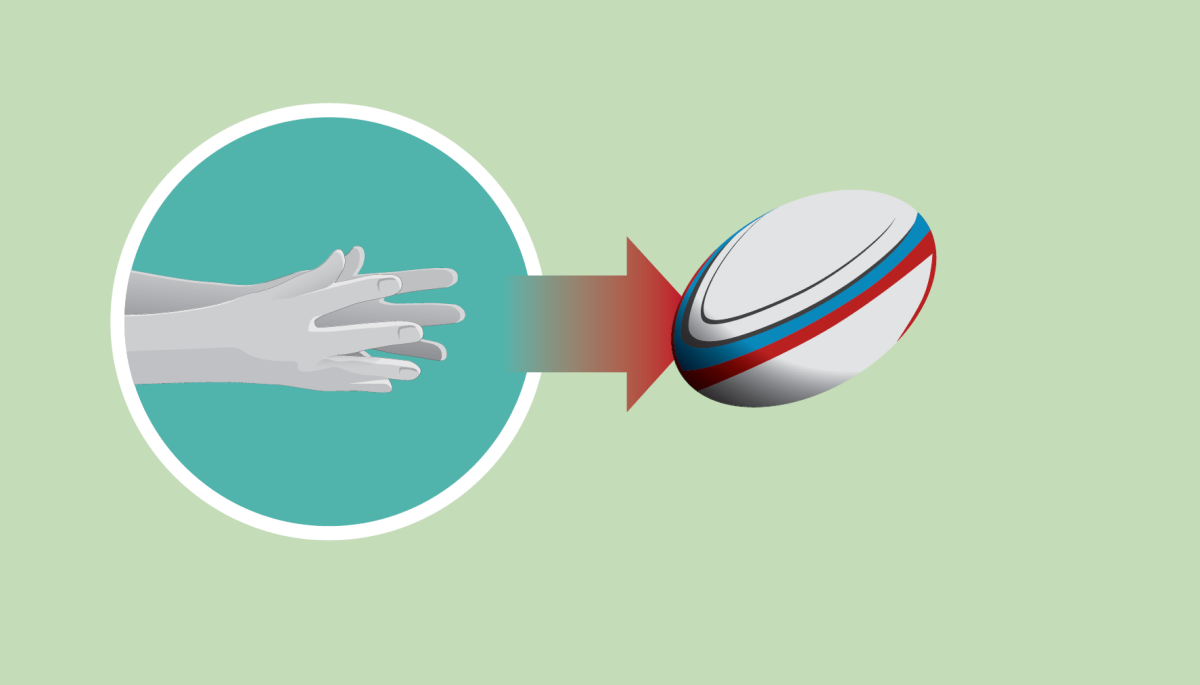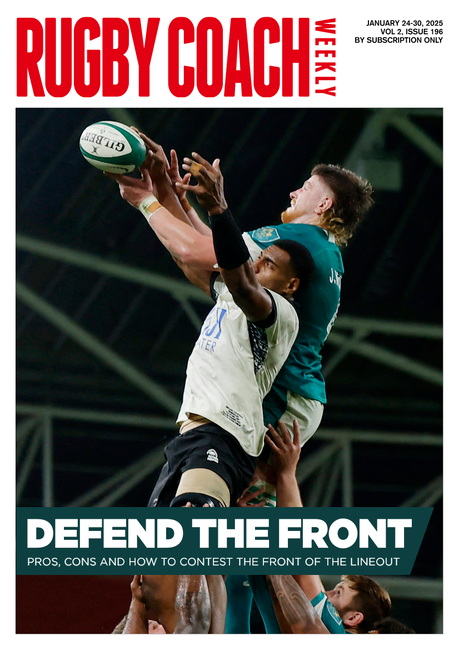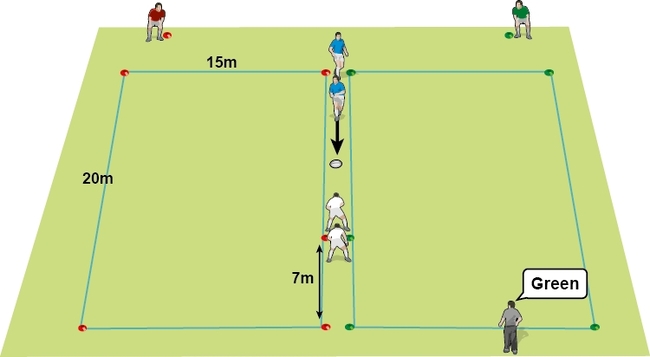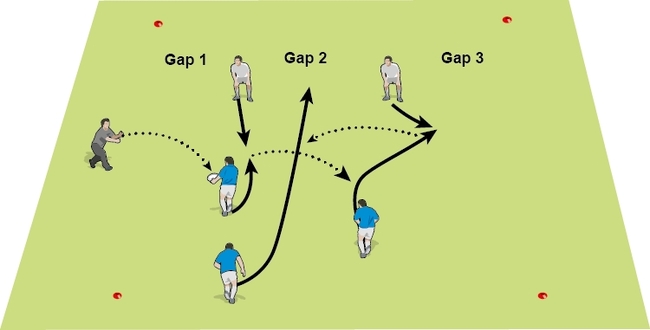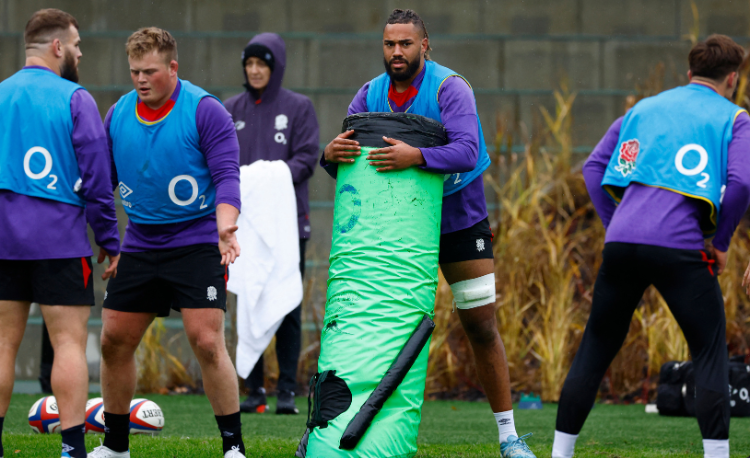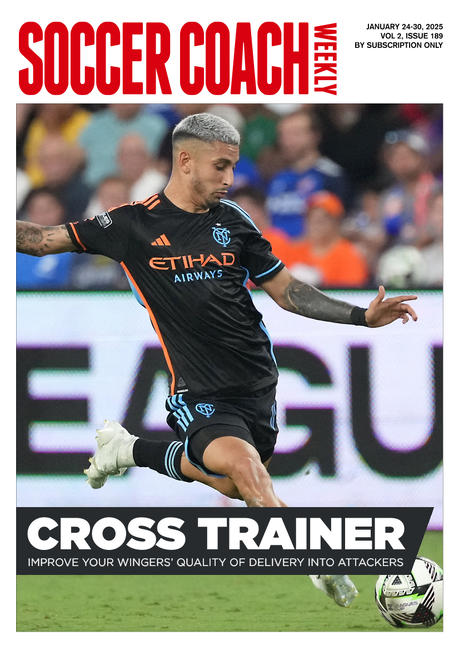Rugby league to rugby union skills
DENIS BETTS, now back coaching in rugby league, spent four years as a rugby union skills coach at Gloucester. Here, he shares his thoughts on pass technique.
Coaching is about creating habits in players – repeatable skills accurately performed under pressure.
I set up systems at Gloucester to work on the core areas of handling, running and tackling. Hard graft on the basics means that players can make the split-second decisions, which can lead to line breaks or closing down of attacks.
For instance, I worked on better handling techniques. One area I found needed particular attention was use of the thumb.
Catching is taken for granted by many players and they forget the significance of the thumb to help them catch the ball and then carry it. Some players will catch, carry and pass as if their hand is a paddle.
To coach it well, I first made the players aware of the importance of using the thumb. I then outlined the benefits – control, and a more successful catch and pass.
Once they are convinced of the benefits, they are happy to practise hard to improve and make it a habit.
Habits into decision-making
Putting skills into game situations, I work on rugby decision-making: that is, positioning opposition players so you can dominate them.
In attack, that means either beating them in the collision, avoiding them or fixing them so you can pass to another attacker in space.
In defence, it’s manipulating the ball carrier before they reach contact; or, if they come into contact, the best tackle to use.
In League, we concentrate on the ball carrier positioning the defender by the angles of their run.
Defenders come from different angles in matches and ball carriers have to know how to fix a player who is front of them (the most regular training scenario), and from the side, behind them and at different paces.
We continually revisit 2v1 situations in training. The ball carrier has to know what is in front of them and understand how the defender might move. They use their eyes to make the defender move and know where the support player is.
A 2v1 is a culmination of plays which might start from, say, a 5v5. Again, training needs to create situations where players work on their line breaks, making them and then finishing them off.
I think these sort of details get lost in training sessions because we have to revert back to working on set pieces all the time.
Yes, they are an important part of gaining possession, but you must score when you make a line break.
DEVELOP YOUR SHORT PASSING GAME
A short passing game will create opportunities for line breaks and completing 2v1s.
Spin passing still has a role to play, but we need to work on the detail of quick, accurate, short passes. These passes are easy to catch, allowing the receiver more time to see the next decision.
I think we are spoiled by the new ball technology; there is so much grip on the ball and it has turned players into lazy passers.
In the old days, we didn’t see long spin passes. Instead, players had to push the pass, because the ball was heavier and less sticky.
Short passes are really push passes. The player should have the sensation of squeezing the ball through their fingers and towards the target.
Get rid of the paddle grip

Related Files
Newsletter Sign Up
Coaches Testimonials

Gerald Kearney, Downtown Las Vegas Soccer Club

Paul Butler, Florida, USA

Rick Shields, Springboro, USA

Tony Green, Pierrefonds Titans, Quebec, Canada
Subscribe Today
Be a more effective, more successful rugby coach
In a recent survey 89% of subscribers said Rugby Coach Weekly makes them more confident, 91% said Rugby Coach Weekly makes them a more effective coach and 93% said Rugby Coach Weekly makes them more inspired.
Get Weekly Inspiration
All the latest techniques and approaches
Rugby Coach Weekly offers proven and easy to use rugby drills, coaching sessions, practice plans, small-sided games, warm-ups, training tips and advice.
We've been at the cutting edge of rugby coaching since we launched in 2005, creating resources for the grassroots youth coach, following best practice from around the world and insights from the professional game.

